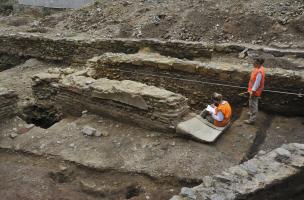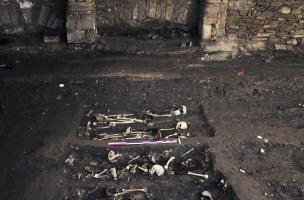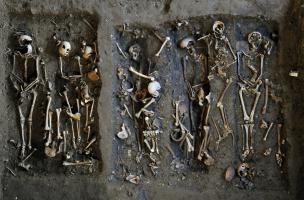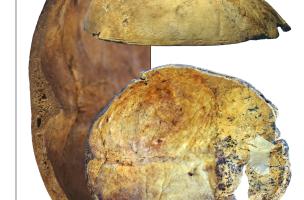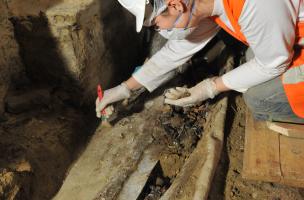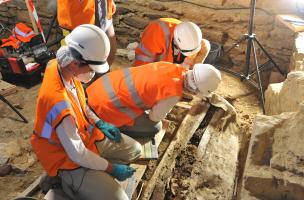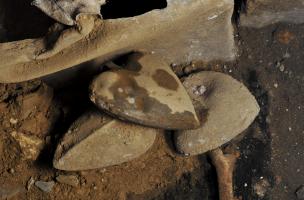You are here
An Antique temple is discovered under the Jacobins convent in Rennes
Since December 2011, a team of Inrap archaeologists has been excavating the site of the Jacobins convent in Rennes. This work is curated by the State (Drac Burgundy). The site is located in the future location of the Rennes Métropole conference center and is one of the largest urban excavations ever realized in western France.
Inside the convent, in the cloister garden and exterior courtyards, the archaeologists are studying the Antique quarter and its evolution as a Medieval suburb, as well as retracing the history of the convent.
Many Gallo-Roman remains have been uncovered, including a temple from the 3rd century AD. At the same time, a study of the walls of the convent has revealed the architectural evolution of the building from the 14th to 18th centuries.
A dynamic quarter in the Antique city of Condate (1st to 4th centuries)
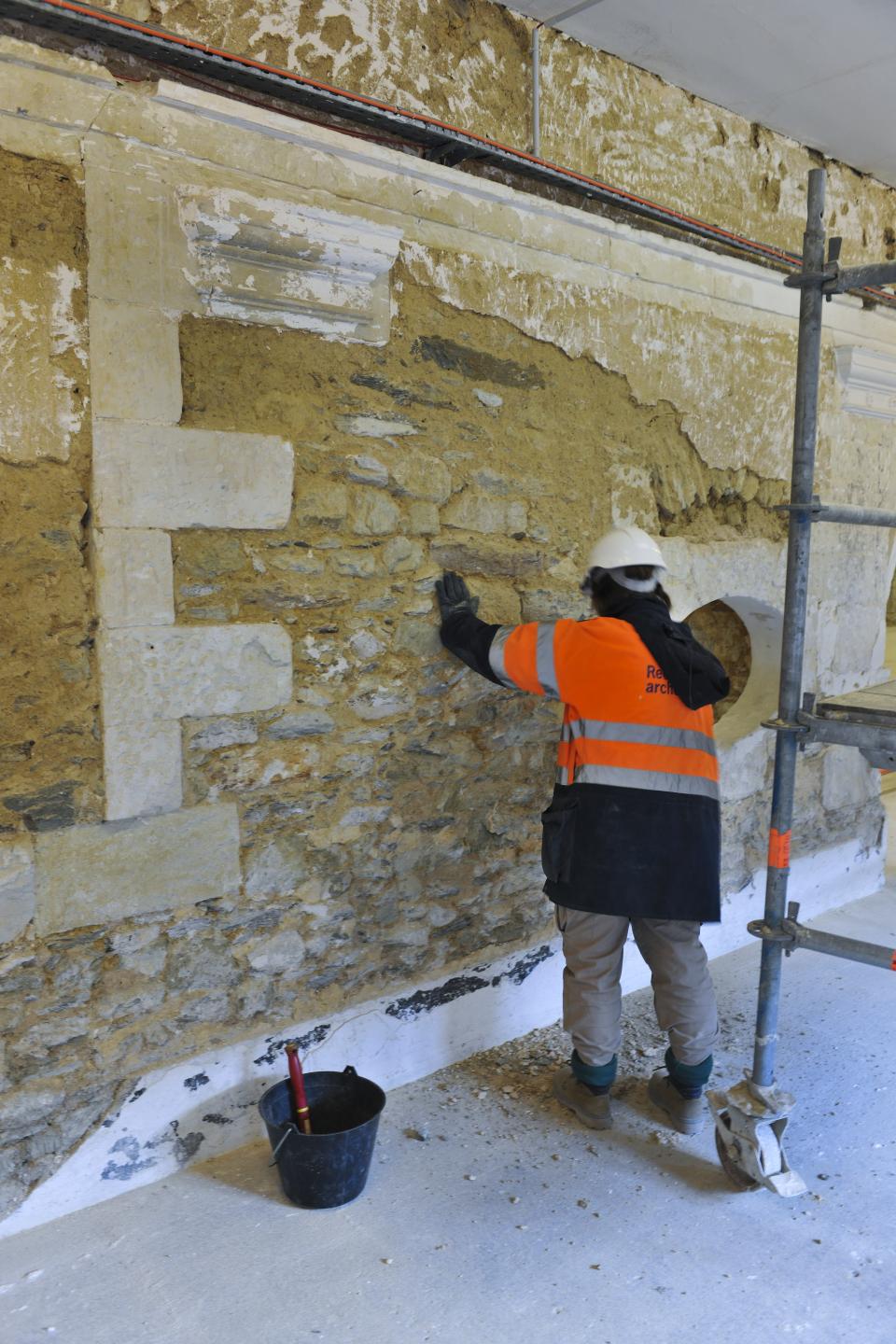
In the northern courtyard of the convent, the archaeologists have just uncovered a major intersection of the city, in the middle of which stood a temple. This is an unexpected discovery of the first Antique public building in Rennes, except for the small wall and other traces of an honorary arch. This temple built on a podium is 9 meters long and quadrangular, with a staircase on one side. Two statues (a cock and a billy goat) found nearby could indicate a devotion to Mercury. This god of commerce, travelers and crossroads would fit perfectly well in this busy quarter that bustled with artisan and commercial activities.
Revisiting the history of the Jacobins convent
The current research associates the excavation of basements with a study of the buildings in order to better understand the evolution of the convent from the time of its construction to the present. The capitulary room, where the brothers gathered, is located in the middle of a space that is now open. The remains of the first capitulary room were recently found a little to the south. Numerous decorative elements show that this was a thriving religious establishment. The floors of the Bonne-Nouvelle chapel and the galleries of the cloisters were composed of red floor tiles (tomettes) forming motifs and whose imprints are still clearly visible.
They were associated with painted columns adorned with sculpted capitals.
The Jacobins convent was also an important sepulchral site with numerous graves dating from the beginning of the 15th to the 18th century. Several hundreds of graves were excavated in the church and the gallery of wall-niche tombs. They will enable an in-depth study of the physical characteristics of those inhumed there.
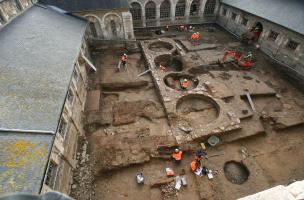
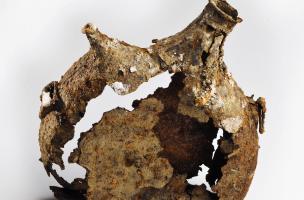
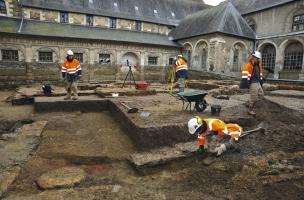
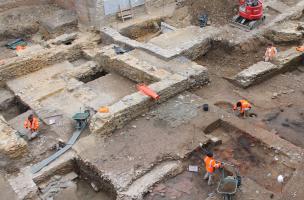
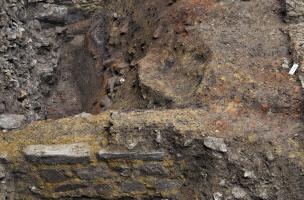

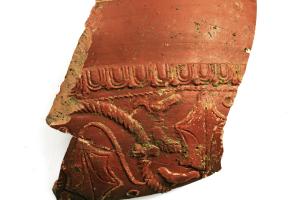
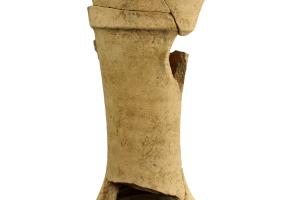
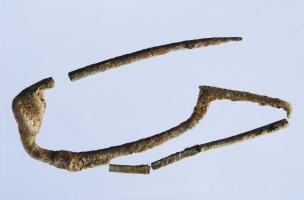
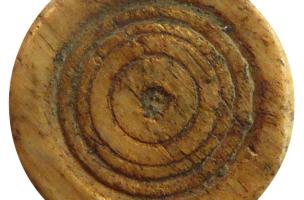
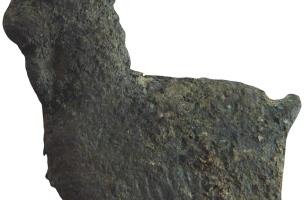
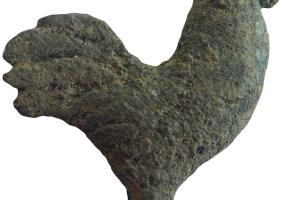
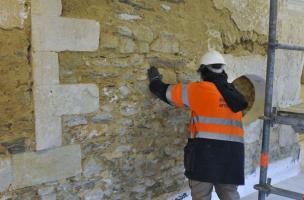

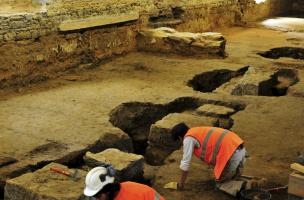
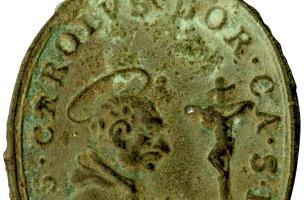
Mahaut Tyrrell
Media communication
Inrap, media relations and partnerships
01 40 08 80 24
mahaut.tyrrell [at] inrap.fr
Sandrine Lalain
Cultural development and communication
Inrap, direction interrégionale Grand Ouest
02 23 36 00 64 -
sandrine.lalain [at] inrap.fr


